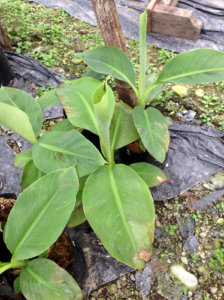
DID YOU KNOW…
…that you can have your steak – and eat it guiltlessly? Thanks to BSF grantee Prof. Shulamit Levenberg, your juicy ribeye can now be guiltlessly devoured without sacrificing taste, texture, or a live animal. An internationally renowned scientist in tissue engineering and dean of the Technion’s Biomedical Engineering Department, Levenberg is the brains behind Aleph Farms, the Israeli food-tech startup that created the world’s first-ever, fully sized lab-grown steak. Using natural animal cells and cutting-edge bio printing technology, Levenberg and her team of scientists can produce any cut of steak that looks, smells, and tastes just like a regular cut of beef sourced from a slaughtered cow. She is currently midway through her current BSF grant in biomedical engineering (tissue engineering, stem cells, and biotechnology) in collaboration with U.S. partner Prof. Christopher Chen, a fellow biological engineer from Boston University, where the two are researching “Geometric and Mechanical Patterning of Hierarchical Vascular Networks.” Read more here about her impressive tissue engineering milestone that could and should shake up the global food system.

…that plant roots could be key in the fight against cancer? Cancerous growths and sprawling plant roots may have more in common than you think. According to a groundbreaking study by Israeli scientists at Tel Aviv University, they may both use a spiral motion, “just like a drill penetrating a wall,” to grow, and in the case of malignant tumors, aggressively invade healthy tissue. Former BSF grantee Prof. Ilan Tsarfaty from Tel Aviv University’s Department of Clinical Microbiology and Immunology at the Sackler Faculty of Medicine, teamed up with Prof. Eilon Shani from the School of Plant Sciences and Food Security for an interdisciplinary analysis of plant roots with potentially fascinating implications for cancer research and the mechanics of disease spread. Using sophisticated computational models originally developed by Tsarfaty’s lab to study cancer cells, they were actually able, for the first time, to observe with their own eyes the corkscrew movement of the plant root, which may mimic the behavior of malignant cells. In his previous BSF research, Tsarfaty collaborated with fellow Tel Aviv University Prof. Ofer Kaplan and Prof. of Radiology Jerry Glickson from the Perelman School of Medicine at the University of Pennsylvania on a medicine grant in oncology, where they jointly developed novel imaging and therapy modalities to help in the fight against breast cancer. Read more here.
…that one day, human embryos might gestate outside the womb? In a breakthrough that has eluded scientists for almost a century, Israeli stem cell biologist and BSF grantee Prof. Jacob Hanna and his team at the Weizmann Institute of Science have successfully grown mouse embryos encased in a state-of-the-art glass “womb” for a record six days. This “unprecedented tool” for observing “balls of cells” developing into an “advanced fetus,” will help scientists understand the previously-hidden process of organ formation in mammals and could eventually pave the way for gestating human embryos outside of the womb. Prof. Hanna is currently working on an active BSF medicine grant in cardiology, blood and respiratory systems with U.S. collaborator Dr. Federica Accornero from Ohio State University. Read more here.
…that there could be a link between Parkinson’s Disease and cockroaches? Parkinson’s Disease, a progressive nervous system disorder that impairs the movement of millions of people worldwide, remains somewhat of a mystery with no known cause or cure. In a novel approach to Parkinson’s research, BSF grantees Prof. Frederic Libersat of Ben-Gurion University of the Negev and Prof. Michael Adams of the University of California, Riverside will be examining the symptomatic similarities between wasp-stung cockroaches and Parkinson’s patients in their fourth BSF-funded collaboration. According to the U.S.-Israel research team, cockroaches stung by these parasitic jewel wasps exhibit the same type of diminished motor activity as Parkinson’s patients, possibly triggered by comparable dopamine malfunctions in the brain. While the link between a venom-infested cockroach and a Parkinson’s patient may not be obvious yet, joining together top scientific minds to consider the connection could yield productive findings and ultimately real-life therapies. Read more here.
